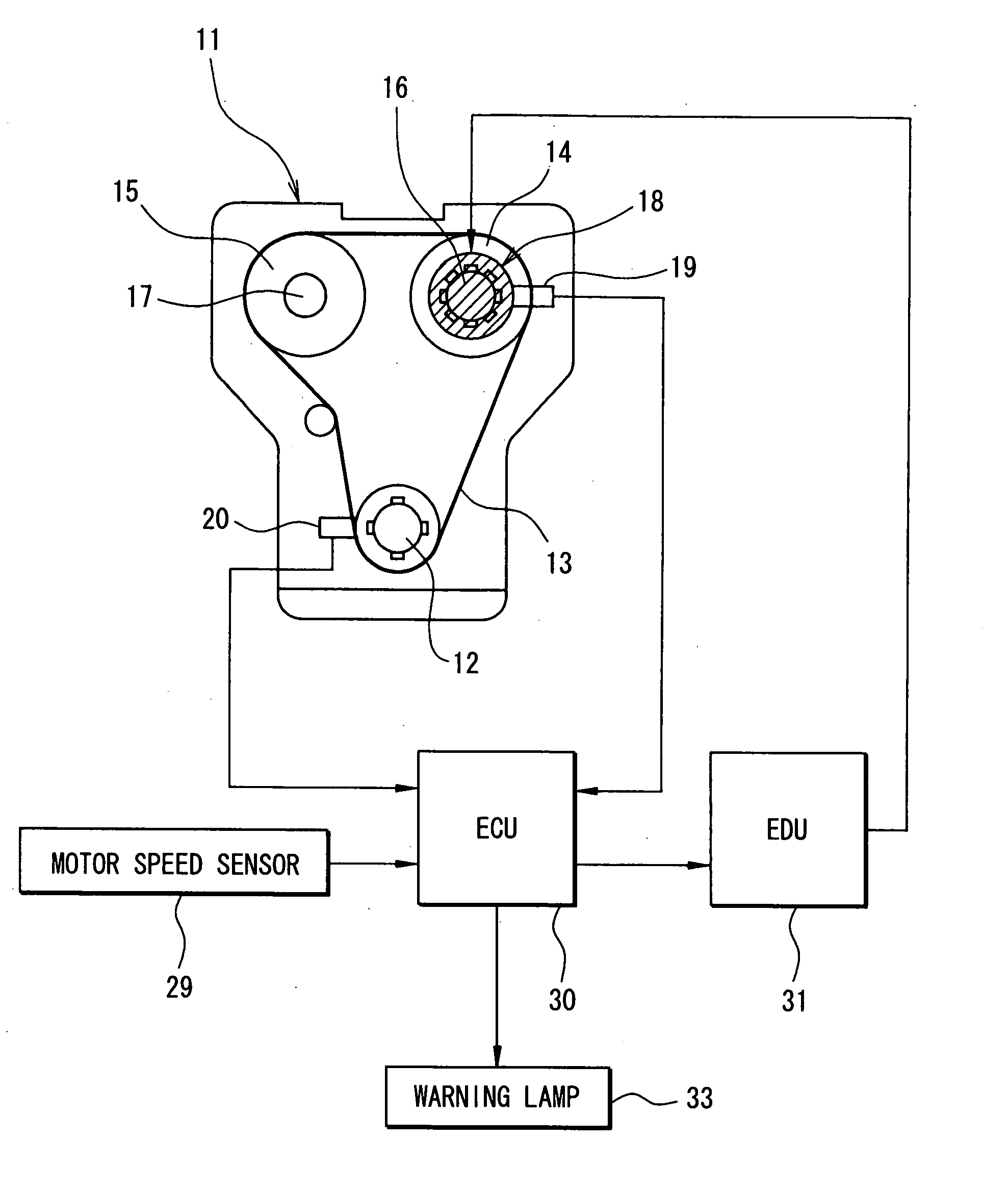Variable valve timing controller for internal combustion engine
a timing controller and variable valve technology, applied in the direction of electrical control, process and machine control, etc., can solve the problem of slow response speed of the variable valve timing control, and achieve the effect of restricting the excessive temperature rise of the motor coil
- Summary
- Abstract
- Description
- Claims
- Application Information
AI Technical Summary
Benefits of technology
Problems solved by technology
Method used
Image
Examples
Embodiment Construction
[0020] An embodiment of the present invention will be described hereinafter. FIG. 1 schematically shows a whole structure of an engine control system. An internal combustion engine 11, which is referred to as an engine hereinafter, includes a crankshaft 12. A driving force of the crankshaft 12 is transmitted to an intake camshaft 16 and an exhaust camshaft 17 through a timing chain 13 (or a timing belt) and sprockets 14, 15. A variable valve timing controller 18, which includes an electric motor, is coupled to the intake cam shaft 16. The variable valve timing controller 18 varies a rotational phase (camshaft phase) of the intake camshaft 16 relative to the crankshaft 12 so that the valve timing of an intake vale (not shown) is adjusted.
[0021] A cam angle sensor 19 is provided around the intake camshaft 16. The cam angle sensor 19 outputs a cam angle signal every predetermined cam angle of the intake camshaft 16. A crank angle sensor 20 is provided around the cranks shaft 12. The cr...
PUM
 Login to View More
Login to View More Abstract
Description
Claims
Application Information
 Login to View More
Login to View More - R&D
- Intellectual Property
- Life Sciences
- Materials
- Tech Scout
- Unparalleled Data Quality
- Higher Quality Content
- 60% Fewer Hallucinations
Browse by: Latest US Patents, China's latest patents, Technical Efficacy Thesaurus, Application Domain, Technology Topic, Popular Technical Reports.
© 2025 PatSnap. All rights reserved.Legal|Privacy policy|Modern Slavery Act Transparency Statement|Sitemap|About US| Contact US: help@patsnap.com



